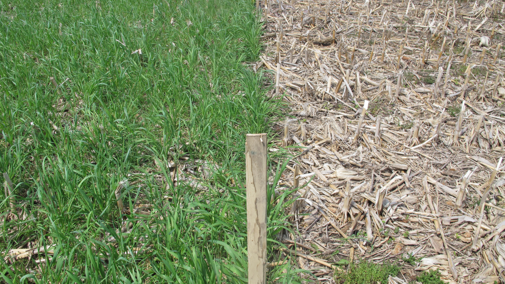In a CropWatch article about three weeks ago, we showed two graphs of soil temperatures recorded at 15-minute intervals in each of two research plots at the Eastern Nebraska Research and Extension Center (ENREC) near Mead. The two plots included a no-till corn-residue plot into which soybean was to be planted this spring and a no-till soybean-residue plot into which corn was to be planted this spring. We noted that a cereal rye cover crop planted on November 17, 2018, into the west half of each plot did not have much impact on soil temperatures in either research plot.
Here, we update the soil temperature record for just the no-till corn residue plot (Figure 1). This plot will be planted to soybeans on May 29. Three identical plots were planted April 17, April 30, and May 15, each with soybean varieties of MG 1.1, 2.1, 3.1 and 4.1. (for viewing at an August 27, 2019, ENREC event).

Figure 2 shows the air temperature (thin black line) fluctuating from a daily high in mid-afternoon (14:30) to a daily low just before dawn (06:30). For the same times, it also shows the soil temperature fluctuation at a 2-inch depth from its daily high (thick red line) to its daily low (thick blue line). Note the narrower range of soil temperatures as compared to air temperatures during the 37 days from April 5 to May 12. The air temperature daily highs were not so high during some periods (April 10-14 and 26-27, April 30-May 1, and May 7-11). In contrast, air temperature daily lows were very low in several periods of the 37-day time span. Overall, air temperature daily lows were less than 36°F on eight days (five of which were 32°F or lower), were less than 40°F on 17 days, were less than 44°F on 23 days; and notably, were less than 48°F on 31 of the 37 days. Clearly, April and early May were quite cold or cool on most mornings.
The daily low soil temperatures recorded at 2 inches deep at 6:30 a.m. from April 5 to May 13 (see red line in Figure 2) were at or above 48°F, except for April 11-14 (soil temperatures dropped during this period to a very low 38°F on April 13), and were slightly less than 48°F during brief periods April 19-20 and April 27.
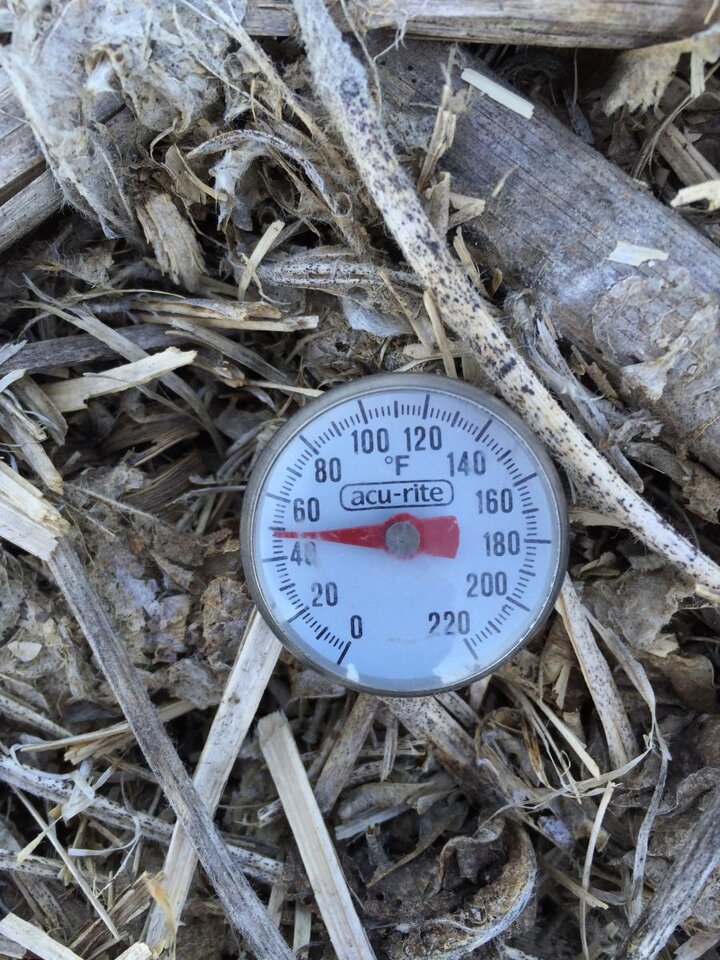
Many soybean agronomists recommend not planting until the soil temperatures is 50°F or more and is predicted to remain so thereafter. Based on temperatures shown in Figure 2, this would have necessitated waiting until May 3 to begin planting soybeans at this well-drained sandy loam research site. However, other agronomists (see Nebraska and Illinois studies) have noted that higher soybean yields are highly associated with earlier planting. These agronomists have suggested that if the field soil temperature is at 50°F or greater (Figure 3) and is predicted to remain so during the next 24 or 48 hours (number of hours varies by agronomist), it should be safe to plant soybeans in late April.
Aside from the greater yield possible with moving your soybean planting date into April, there is a physiological basis for using this earlier planting protocol caveat of 24 to 48 hours. When soybean seed commences germination (quickly, if planted in moist soil), imbibitional water uptake begins immediately. During this imbibitional phase, cellular membranes are rehydrated to a natural functional state―a requirement before any subsequent growth can even start.
With warm soil temperatures (50°F or greater), the imbibitional phase will be completed without problems; however, cold soil temperatures during this phase will lead to abnormal membrane rehydration, resulting in seedlings suffering what is called “chilling injury.” The first visible symptom of this injury will be cotyledons displaying outer layers of dead tissue (Tully et al., 1981). Once the imbibitional water uptake phase is completed, no chilling injury can occur, as the growing soybean seedlings are very tolerant to subsequent cold soil temperature periods (even as low as 35-40°F). (Note though that such low soil temperatures can be expected to lengthen the germination-to-emergence timeframe.)
Relative to the daily soil temperature highs and lows in Figure 2, short rows of non-treated MG 3.0 variety were planted at a rate of nine seeds per foot on 10 April dates in the Figure 1 research plot. After removing about 4 inches of corn residue on each side of each row section, the soybean seeds were always planted in mid-afternoon (i.e., 1400-1500 pm) into 1.25-inch deep furrows, with a small amount of water added to the bottom of the furrow, just before the seeds were planted. The furrows were then covered with non-wet soil that was firmed with a hoe head. The idea was to ensure germination commenced quickly to assess if seedlings emerging after the 10 April planting dates exhibited any chilling injury (damaged tissue or seedling death). In photos taken at noon on May 13, Figure 4 shows the emerged seedlings. (Click on the left or right arrows to view each the photo for each planting date.)
In each of the 10 photos taken May 13, you will see a 12-inch ruler that allows you to assess the number of seedlings per foot that emerged from each planting date. The planted seed was 95% germ, so a seeding rate of 9 seeds per foot (x 0.95) would be expected to result in 8.6 seedlings per foot or 150K plants per acre, assuming an absence of any chilling injury. Though seedling counts for the 10 April planting dates have yet to be formally conducted, viewing the May 13 photos makes it clear that little if any seedling loss occurred from any of the April planting dates, leading to the inference that chilling injury was not a factor for these planting dates. Unfortunately, we were unable to plant on every April day.
-

Figure 4. Use the left or right arrows to view soybean seedlings that emerged from each of the 10 April planting dates. Note that the seeds planted at 14:30 pm – the high soil temperature reading on April 8, 9, 10, 15, 16, 17, 19, 22, 24, and 29, were exposed to ever lower soil temps attained at 0630 the next day. -
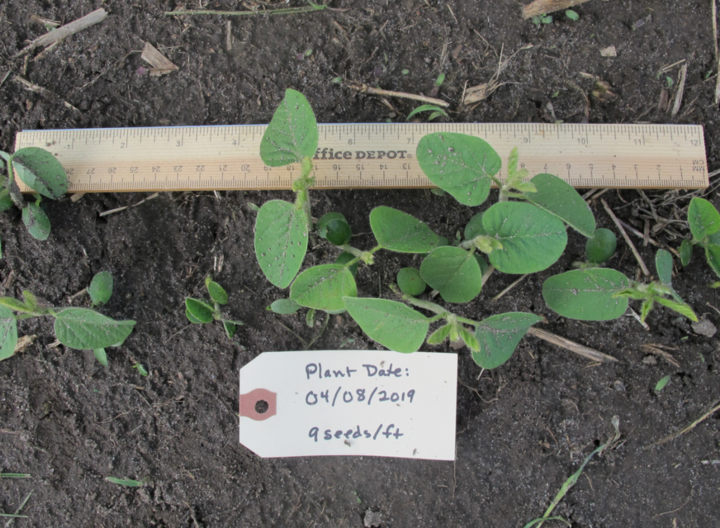
Figure 4a. Planted April 8, 2019, nine seeds per foot
-
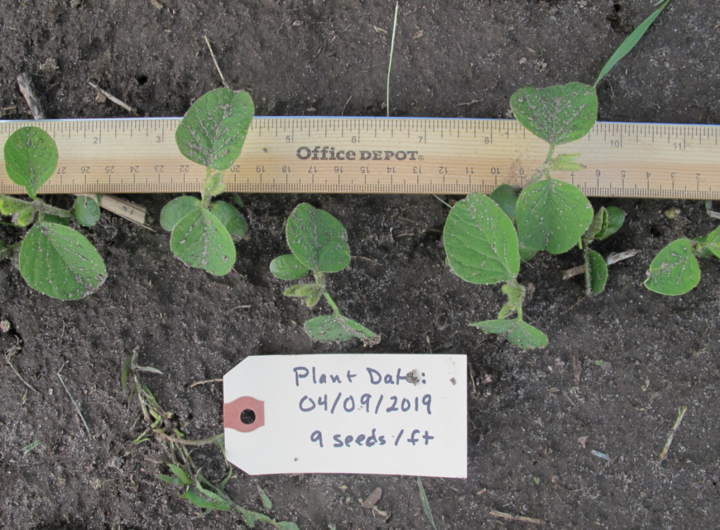
Figure 4b. Planted April 9, 2019, nine seeds per foot
-
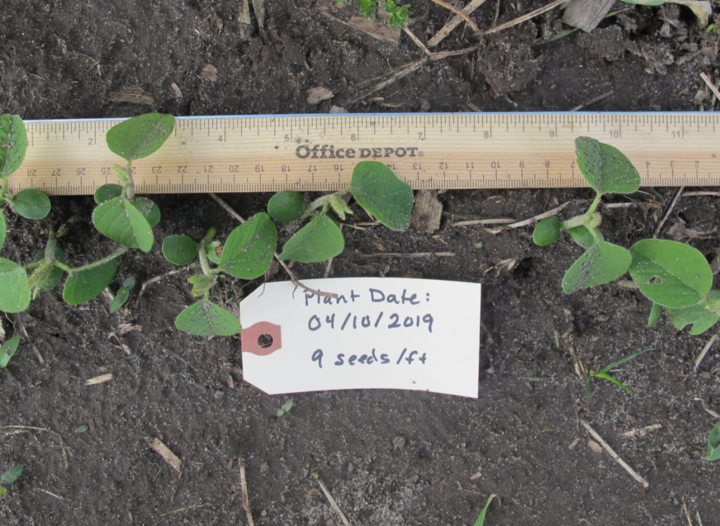
Figure 4c. Planted April 10, 2019, nine seeds per foot
-
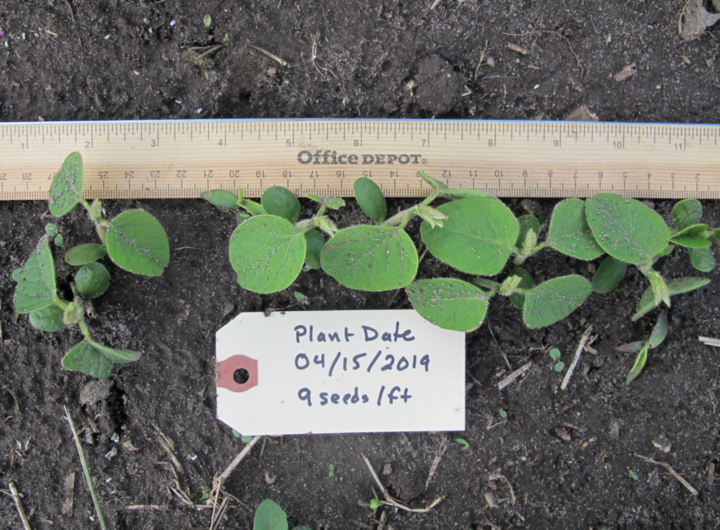
Figure 4d. Planted April 15, 2019, nine seeds per foot
-
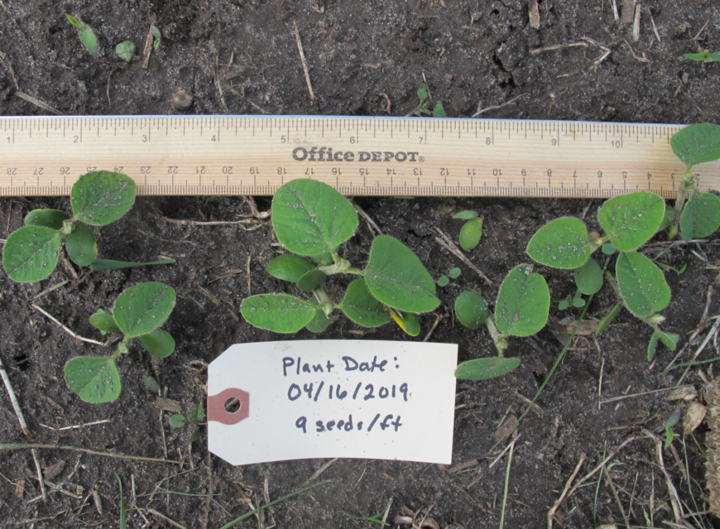
Figure 4e. Planted April 16, 2019, nine seeds per foot. -
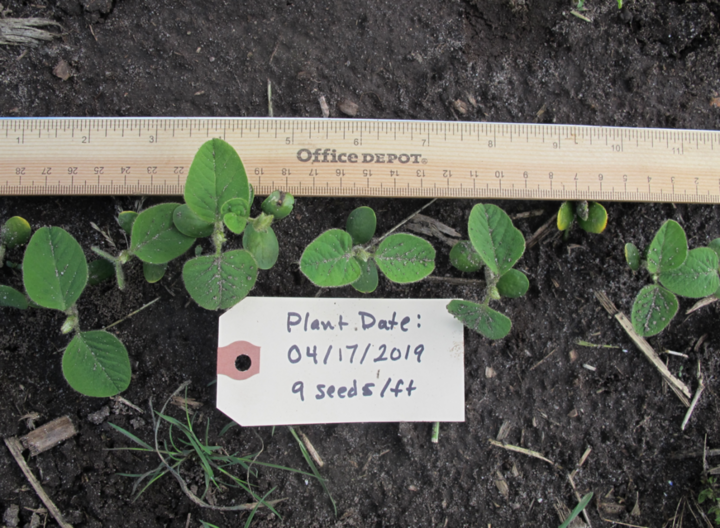
Figure 4f. Planted April 17, 2019, nine seeds per foot. -
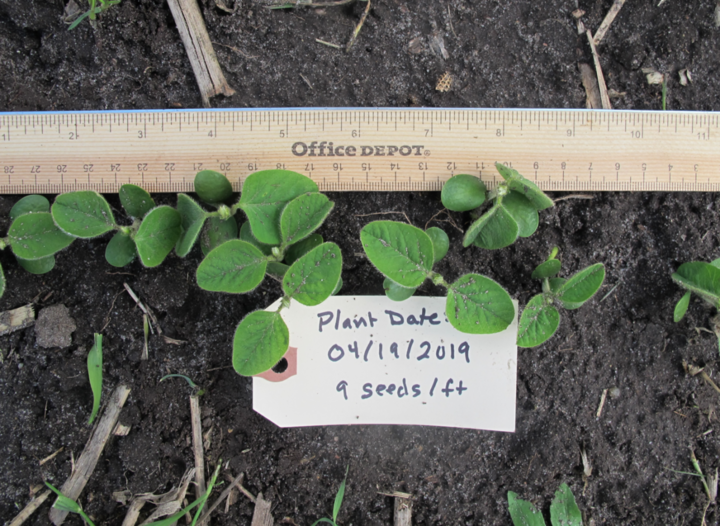
Figure 4g. Planted April 19, 2019, nine seeds per foot. -

Figure 4h. Planted April 22, 2019, nine seeds per foot
-
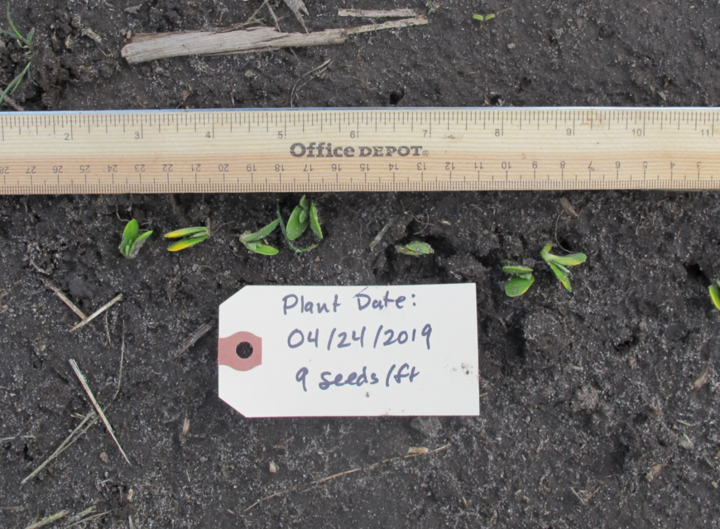
Figure 4i. Planted April 24, 2019, nine seeds per foot
-

Figure 4j. Planted April 29, 2019, nine seeds per foot
The key questions that have yet to be resolved relative to cold soil temperature-induced chilling injury in soybean are:
1) How low must the soil temperature fall during the imbibitional phase before chilling injury becomes biologically significant? Is 50°F still the temperature below which injury is likely or is the minimum temperature for injury actually lower than that?
2) How many hours does it take for soybean to complete the imbibitional phase―48, 24, or fewer hours?
It is known that imbibitional water uptake is faster with warmer compared to colder temperatures (Roskruge and Smith, 1997), which suggests the imbibitional phase reaches completion sooner if seed is planted mid-day into warm temperatures rather than at sunrise into cooler temperatures. This may have been the case here (Figure 2), where the mid-afternoon planted soybeans may have completed their imbibitional water uptake phase well before being exposed to the cooler soil temperatures that continued from that evening into the next morning. In that context, it is interesting to note an Ontario (Canada) Extension Report (Bohner, 2003) that suggests the imbibitional phase in soybean may be completed in just 8 to 24 hours if the soil temperature is kept at 45°F. Clearly replicated field research on the interaction of soil temperature (40-50°F) and the duration of hours needed for imbibitional water uptake is needed. Such research could provide valuable data for soybean producers scheduling April planting dates.
Acknowledgment
Professor Specht thanks Michael Staton, extension educator at Michigan State University, for the brainstorming session and sharing of information that occurred during a telephone call prior to preparing this article.
References
Bohner, Horst. 2003. Do Soil Temperatures at Planting Impact Soybean Yield?, Ontario Ministry of Agriculture, Food and Rural Affairs.
Roskruge, C.L. and M.T. Smith. 1997. Journal of Plant Physiology 151:620-626.
Tully, R.E. et al. 1981. Crop Science 21:312-317.
//
